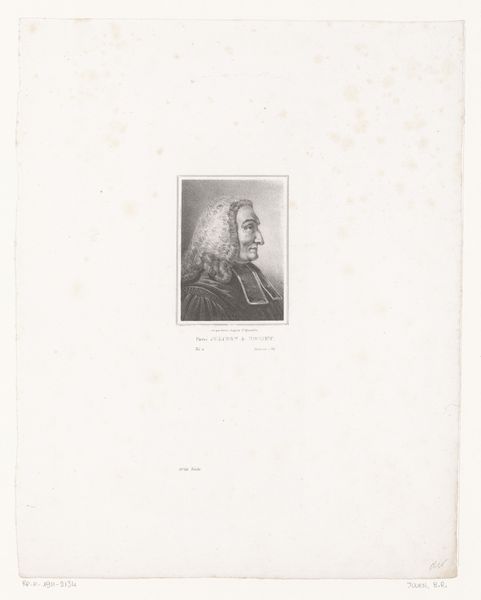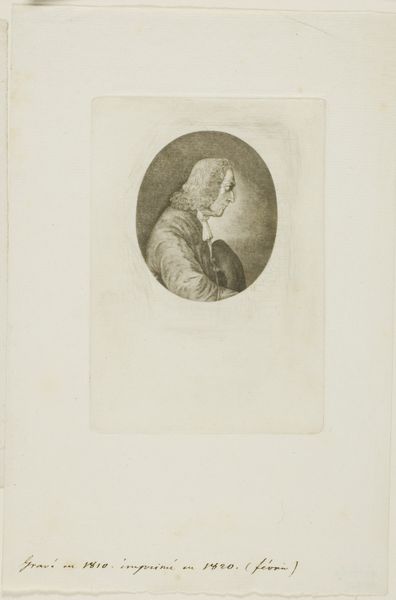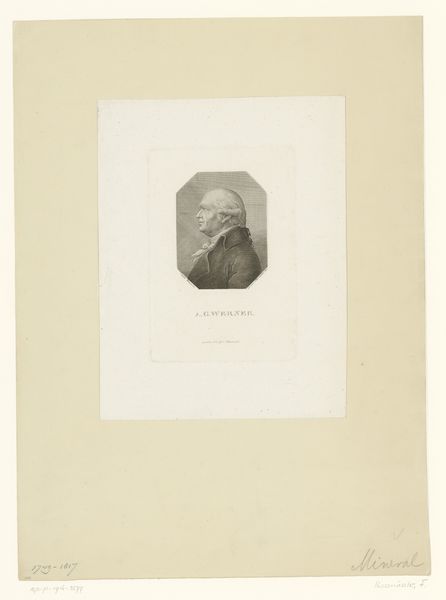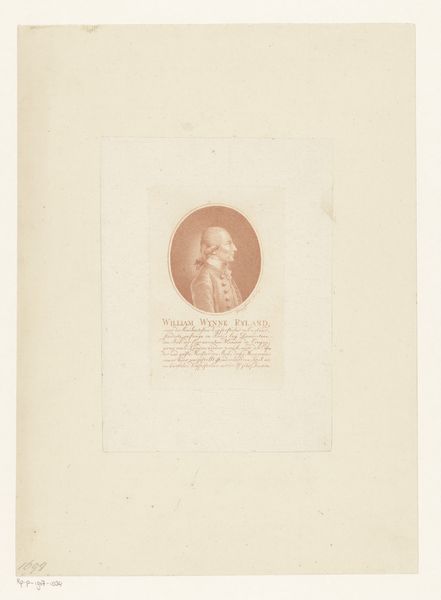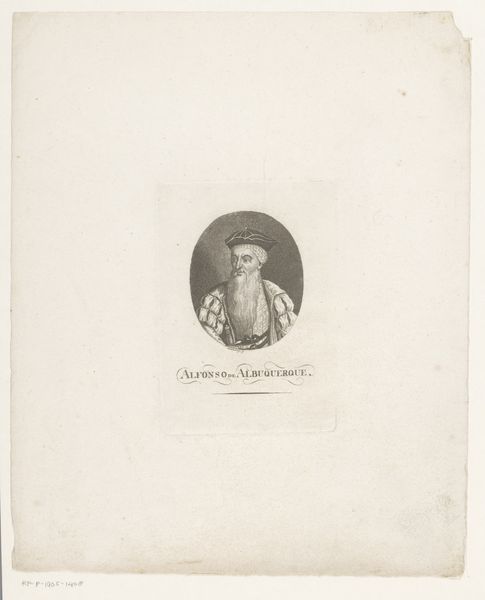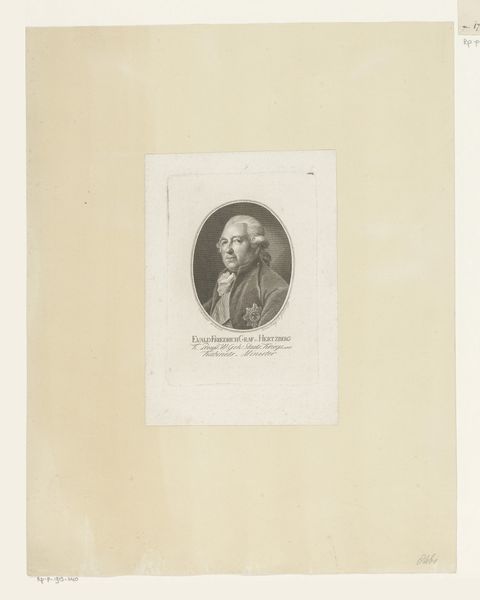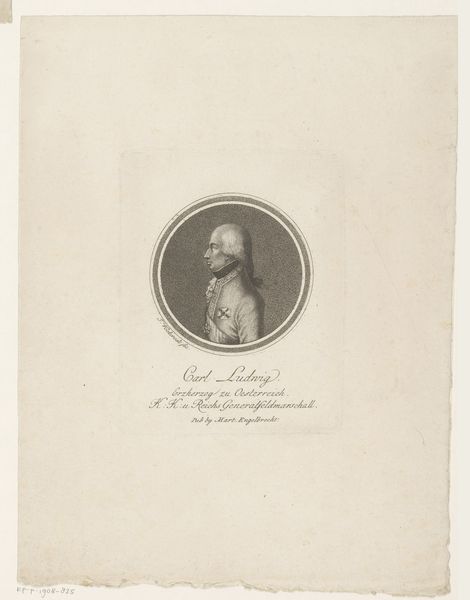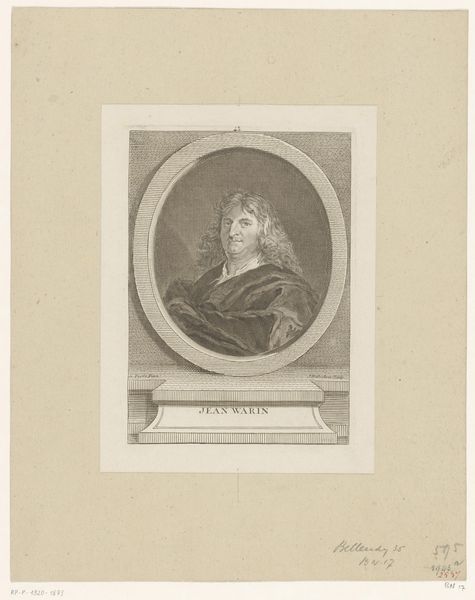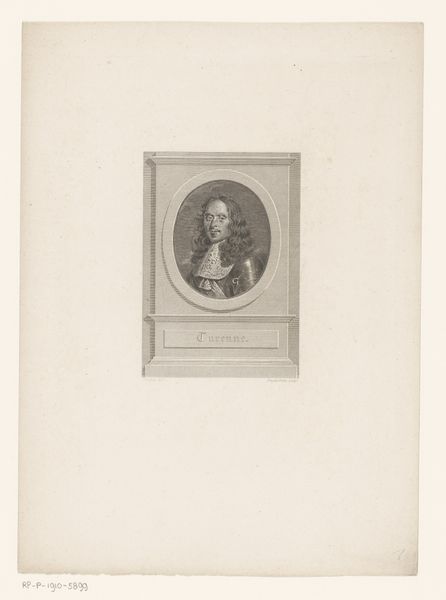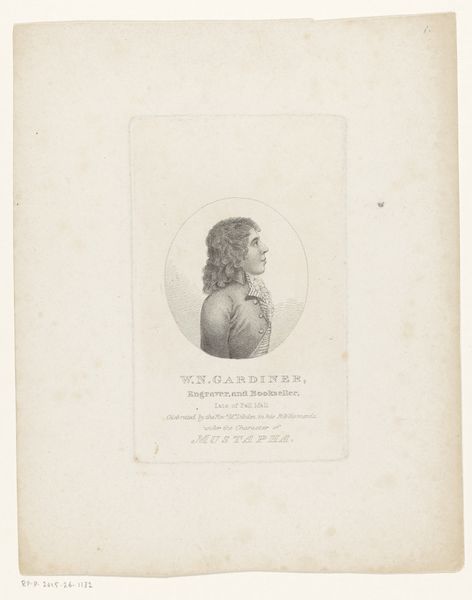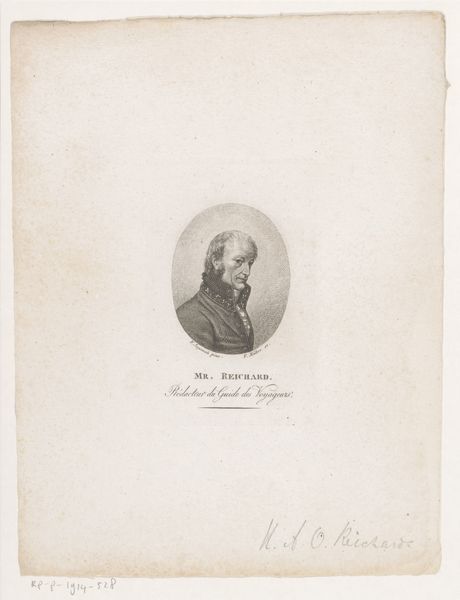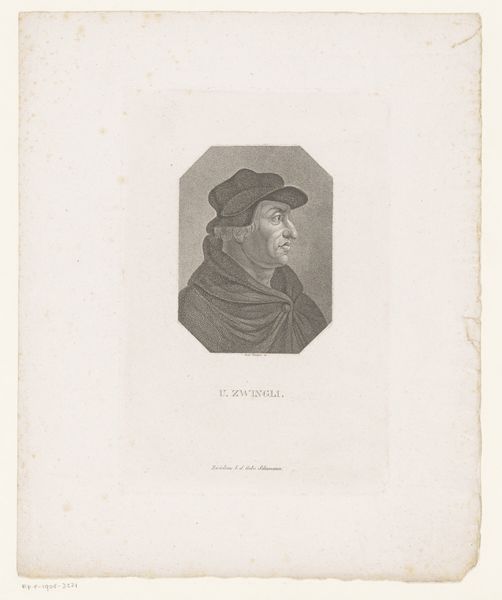
drawing, paper, graphite, engraving
portrait
drawing
neoclacissism
light pencil work
paper
graphite
engraving
Dimensions: height 54 mm, width 40 mm
Copyright: Rijks Museum: Open Domain
Curator: Looking at this light pencil work, we have here the "Portret van Johann Georg Thaumeder", created in 1789 by Leonhard Heinrich Hessell, currently residing here at the Rijksmuseum. Editor: My first impression is one of restrained elegance. There's a quietness, almost a reserved power, conveyed through such delicate lines. The subtle shading gives form to his features without being overly dramatic. Curator: Indeed. And consider the historical moment: Neoclassicism was in full swing, a period emphasizing reason, order, and a return to classical antiquity. Portraits became a means of depicting individuals within a framework of social and civic responsibility. What message did portraiture like this convey in the late 18th century? Editor: Well, Johann Georg Thaumeder was, as indicated below his image, a mayor of the time. That instantly invites a feminist critique of political representation, given its likely exclusion of women and its reinforcement of male dominance in the public sphere. Who benefits from this depiction of power, and at whose expense? Curator: An important lens to bring to it. I think that art like this aimed to legitimize those who already had positions of authority, visually cementing a status quo within social hierarchies. You can also trace through portraits like this shifting cultural values and ideologies, such as growing societal concern for one's image. Editor: Precisely. How are norms of masculinity performed in this work, and what kind of ideal does it propose for civic leaders? Are there coded gestures or visual signifiers meant to signal respectability and competence? Curator: Certainly, the profile view and simple framing invite consideration and respect, focusing purely on the figure without unnecessary distraction. These elements elevate Thaumeder's social standing and affirm a social contract that may or may not represent all citizens. Editor: I appreciate that the artist captured a likeness with subtlety and nuance, reflecting cultural values. And examining through different theoretical and philosophical angles, we have a deeper understanding of it, challenging traditional norms that remain present in our modern world. Curator: Indeed, and understanding this image allows us to ask valuable questions about its construction and the societal circumstances.
Comments
No comments
Be the first to comment and join the conversation on the ultimate creative platform.
